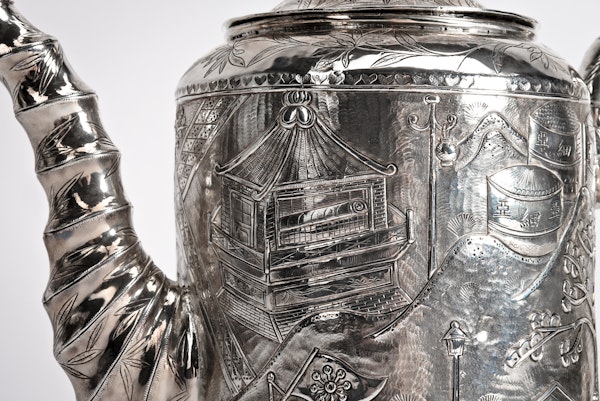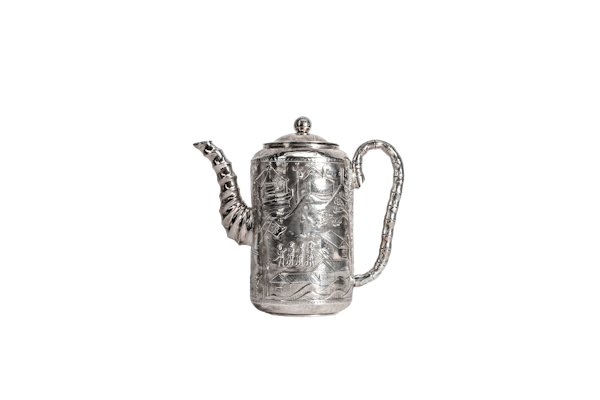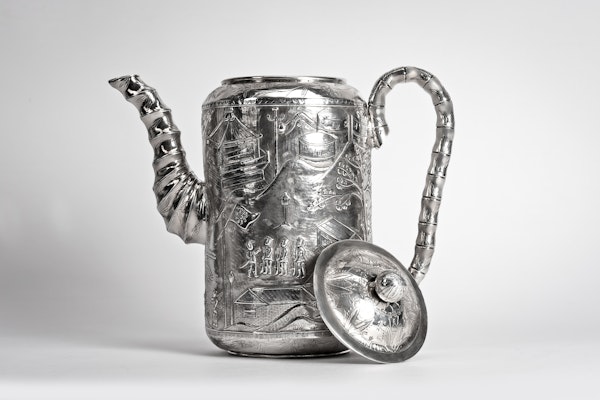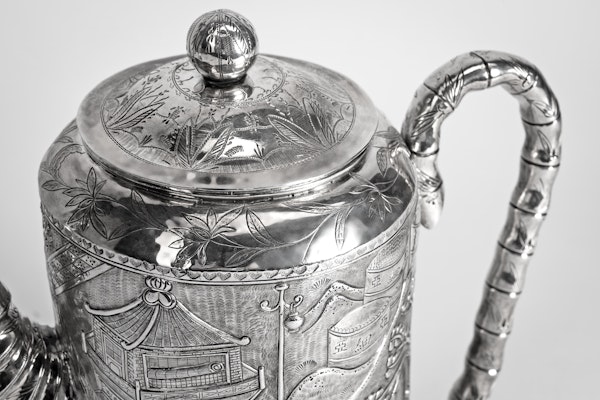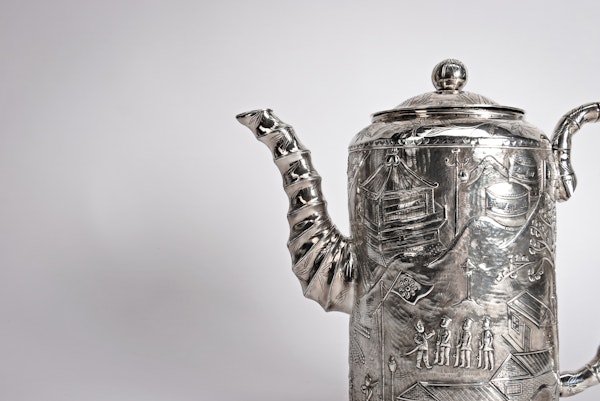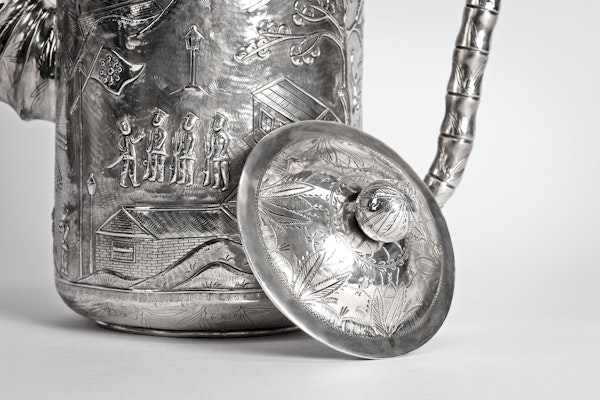A large Chinese silver coffee pot with repousse decoration depicting scenes relating to the Japanese occupation of Port Arthur following the Russo Japanese war of 1904-05
A large Chinese silver coffee pot with repousse decoration depicting scenes relating to the Japanese occupation of Port Arthur following the Russo Japanese war of 1904-05
£4,250.00
Description
A large Chinese silver coffee pot with repousse decoration depicting scenes relating to the Japanese occupation of Port Arthur following the Russo Japanese war of 1904-05.
Between 1894 and 1905 the Japanese Empire was involved in a series of conflicts, firstly with Qing dynasty China and then Russia. An expansionist policy over influence in Korea resulted in the first Sino Japanese conflict from 1894-95 resulting in China’s defeat and Japanese ascendancy in the Korean peninsula. Despite receiving major territorial concessions, Japan was pressured by the European powers to surrender these gains for an increased cash indemnity from China
The Russian empire was effectively the major beneficiary from these changes, expanding its influence and gaining its own concessions from the Chinese in the Liaodong Peninsular which effectively guarded the sea route to Peking. Increased Russian activity in Korea and Manchuria which were viewed by the Japanese as areas under their influence eventually lead to the Russo Japanese war of 1904-05. The conflict began with a surprise attack by the Japanese navy on the Russian fleet at Port Arthur, a base the Japanese had been forced to renounce. The eventual Japanese victory in 1905 marked a curtailment of Russian ambitions in the area and increased prestige and influence for Japan. Port Arthur itself was taken by the Japanese in January 1905 and they administered it as the city of Ryojun until 1945.
This fine coffee pot is particularly interesting as it combines traditional decorative motifs with a representation of contemporary events. There are two scenes depicted on the body of the pot. Firstly, we can see a group of soldiers with an officer standing outside a series of barracks. They are identifiable as Japanese soldiers from the style of uniform and the stylised Japanese flag that flies from a flagpole. The scene is given a modern feeling through the depiction of a lamp post and a series of oil silos in the background, contrasting with a depiction of a traditional Chines shrine and hanging lamp.
An officer and a soldier are to be seen walking from the main group and pointing towards a dog. This second scene shows a Chinese settlement with three figures, a woman, a child and a man carrying a traditional pole with baskets. In the background are traditional junks and a steamship which appears to be flying two Royal Navy ensigns.
The inclusion of a British Naval vessel suggests that the location of the Japanese troops is Port Arthur. Its location on the Liaodong Peninsular was strategically important as it guarded one of the points that guarded the entrance to the Bohai Sea and Peking beyond. The other point, the Shangdong Peninsular, housed a British Naval base centred on Port Edward that had been leased from the Chinese Empire in 1898.
The hilly landscape which frames these scenes is interspersed with engraved representations of grass. The front and back are decorated with cherry and palm trees which provide a visual link to the naturalistic handle which is rendered as a bamboo decorated with engraved leaves. Similarly, the spout takes this naturalistic form. The bottom of the pot and the top are engraved with foliage with traditional key design as a border on the base and stylised cornucopia around the top. The lid continues the theme of foliage engraved in groups with the knob having leaves and foliage engraved like a canopy of greenery.
The unusual combination of traditional Chinese forms with an image of contemporary relevance suggests the pot was made locally in the Liaodong Peninsular. While illustrating the Japanese occupation of the area there is no implied hostility to the Japanese despite China’s humiliation in the recent conflicts. This would suggest not only a local maker who would be sensitive to displaying any outward hostility, but also that it may have been intended for a member of the Japanese forces based in the area. Elements of the design may have been derived from contemporary prints which were widely available and often used by craftsmen as a basis for their work.
| item details | |
|---|---|
| Origin | Chinese |
| Period | Early 1900s |
| Style | Other |
| Condition | Excellent |
| Dimensions | H:21.5cm W:23cm |
| Diameter | Weight: 904 gram |
Product REF: 10005
